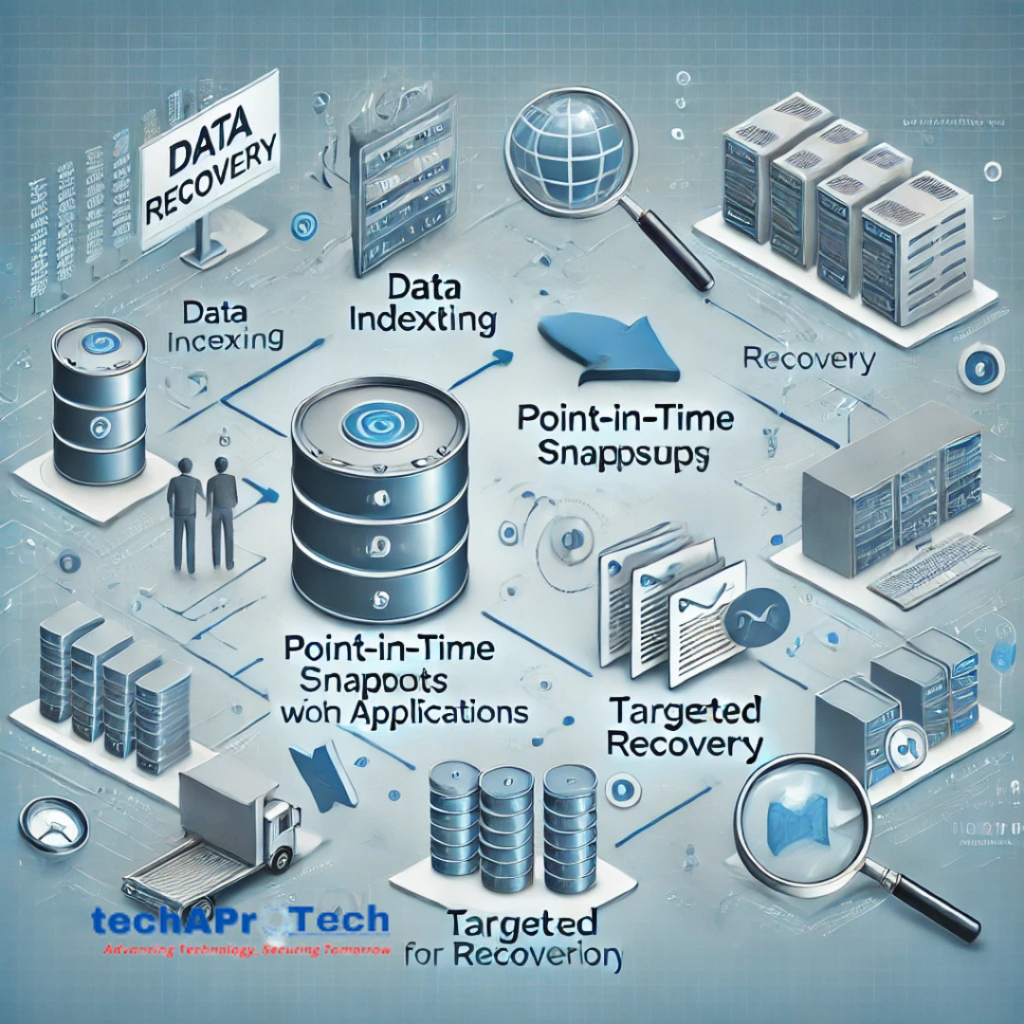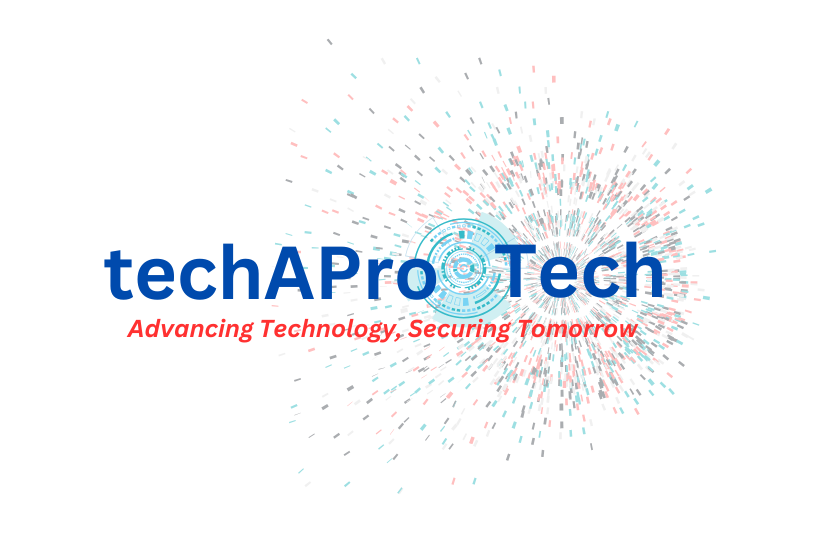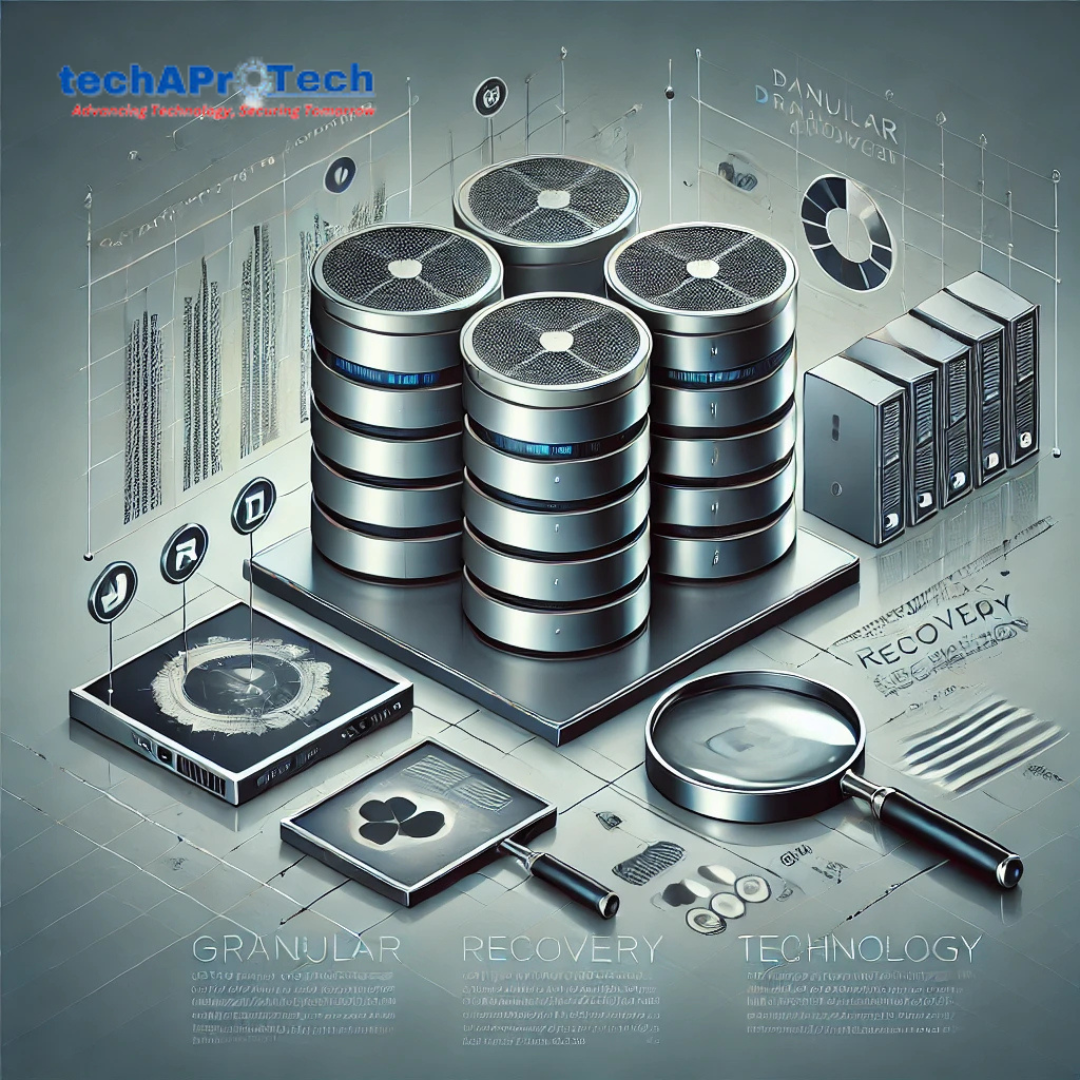Losing data is catastrophic in today’s business world, let alone in the contemporary digital universe. However, not every data loss situation means that the entire system or a particular database need be restored. There are cases that you only want to download a single file, an email, or a record from the databases. That is where Granular Recovery Technology (GRT) is most effective at.
Because GRT is implemented on a per-item basis, it is faster to recover specific items than using other traditional methods. It is a specific strategy of systems data recovery that is slowly revolutionizing how organizations address situations where data is lost.
Granular Recovery Technology:
Granular Recovery Technology is a process of restoring a single item as opposed to the whole backup where files, folder, emails, or records in a database may be recovered. It is therefore strategic and precise as compared to other methods of recovery which are generally system-wide.
Think of the ability to gain one lost email when one cannot restore the entire email server. But that is where GRT comes in—it is capable of achieving just the right amount of recovery with the best possible approach.
Why Granular Recovery Technology is Important?
Data recovery is not exclusively for life-threatening incidents Data recovery is not everyone’s concept of a thriller. Simple cases such as lost files, corrupted files, and even mistakenly deleted files require a solution that is efficient, straightforward and is a small fix. Here’s why GRT is vital:
Time-Saving:
- Full restores can even take a few hours or even days. GRT is able to get what you want within minutes.
- This eliminates cases of stoppage that might slow down business operations and profitability.
Resource Efficiency:
- Restore of entire backup is a heavy operation that needs storage and computational power.
- GRT has smaller resource requirements and is more efficient and inexpensive than other approaches.
User Convenience:
- IT groups do not have to wade through the entire backup files searching for the relevant information.
- GRT makes it easier, it enhances efficiency.
Business Continuity:
- Fast recovery entails that operation is resume without interruption.
- This is important for fields such as medical, banking and shopping sectors.
How Granular Recovery Technology Works?
How GRT works is that it forms very much high fidelities backups that provide abilities to do item by item extractions. Here’s a step-by-step breakdown:
Data Indexing:
- When backing up, GRT enables indexing of all items including files and emails as a means of easy search.
Point-in-Time Snapshots:
- A snapshot is a method used to capture the state of the system at a given time only.
- This way all the data, right up to the metadata, are saved to guarantee perfect replication.
Targeted Retrieval:
- When there is need to recover the data the system isolates and retrieves the exact item.
- It is not necessary to extract or restore some other unimportant data.
Integration with Applications:
- GRT can work in conjunction with exchange, share point or SQL type applications.
- This makes it possible to recover individual emails, calendar item or any database entry as an instance.

Main Key Features
Selective Restoration:
- If I need to retrieve one email or a table from a database, I only should receive it and not an entire collection of emails or a database.
High-Speed Recovery:
- Recovery in granules is roughly ten times faster than in normal methods on average.
Reduced Storage Requirements:
- Also, to avoid an accumulation of backups and hence storage space utilization, GRT does not apply full restores.
Seamless Integration:
- Works with leading backup and recovery tools.
- Integrates seamlessly with packages such as Microsoft Office 365 and VMware among other ones.
Ease of Use:
- All GRT solutions provide graphical control interfaces which make it easy and fast to locate items that need to be retrieved.
Use of Granular Recovery Technology in Real Time Environments
Email Recovery:
- Scenario: An employee sends an email and then, by mistake, deletes it, and it was very important.
- GRT Solution: Resynchronize the email and do not have an impact on the whole mailbox.
Database Recovery:
- Scenario: A database admin lost just one of the tables and they were corrupted.
- GRT Solution: Reconstruct some or all of the table without reconstructing the whole database.
File Server Recovery:
- Scenario: There are documents that are critical, and by some stroke of misfortune; such a document gets overwritten.
- GRT Solution: Get the exact version of the file but do not need to interfere with the operations of the file server.
Application-Specific Recovery:
- Scenario: A document library system in share point is deleted by accident.
- GRT Solution: …in this case, it is possible to restore the library only, without including all the SharePoint environment.
Advantages of Granular Recovery Technology
Increased Productivity:
- IT teams can address data problem inexplicably, reducing interferences.
Cost Savings:
- Cutting the time and space will lead to cost savings.
Better User Experience:
- Companies’ end users solve their problems in record time, thus they are happy.
Enhanced Data Management:
- GRT offers a better data governance practice because of the ability to make accurate recoveries.
Disaster Recovery Enhancement:
- GRT fits into the bigger picture of disaster recovery because it helps to easily handle minor problems.
Tips and Tricks Regarding Granular Recovery Technology
Despite its advantages, GRT does have challenges:
Initial Setup:
- Getting the GRT solutions implemented may be slightly on the challenging side, especially when one may lack the experience.
System Compatibility:
- Another constraint is that GRT solutions should be integrated to existing infrastructure.
Performance Impact:
- While making indexes and keeping detailed backups of the data stored can affect the performance of the system.
If these dangers are reasonably addressed through preparation, training and funding of high-quality GRT solutions, then those can be well managed.
Selecting the Right GRT Solution
When selecting a GRT solution, consider:
Integration:
- Cheque if the software can integrate with your current systems and as well the applications.
Scalability:
- Select a solution that will cater for the needs of your business as it expands.
Ease of Use:
- Download tools should be also easily operable by means of clear and functional interfaces, especially observing the speed of managing recovery operations.
Support and Training:
- Select your vendors who will be able to provide enough customer support and resources in training.
Performance Metrics:
- Explain how the solution affects your system performance in stock management.
Future of Granular Recovery Technology
While businesses keep generating massive amounts of data, the need for precise information recovery instruments, such as GRT, will increase. New wave evolution of GRT including AI data indexing and better integration with cloud computing systems will make it even more powerful.
Sometime in the future, GRT will most probably be adopted as a standard in backup and recovery solutions that could help business regain control over lost data.
Conclusion
Granular Recovery Technology has stepped into the market and is revolutionizing the way that companies address recovery operations. As a fast way of accessing specific items, the system is an effective way of cutting down on losses due to loss of working time, costs and disruption of business.
GRT enables the accurate, efficient handling of email, databases, and file servers, all the things today’s businesses require. But wait, it is not only a way how to recover your data: It is an opportunity of competitive benefit in the field of information management.

